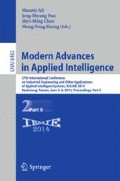Abstract
Smart lighting for commercial buildings should consider both the overall energy usage and the occupants’ individual lighting preferences. This paper describes a study of using data mining techniques to attain this goal. The lighting application embraces the concept of Office Hotelling, where employees are not assigned permanent office spaces, but instead a temporary workplace is selected for each check-in staff. Specifically, taking check-in workers’ light requirements as inputs, a collective classification strategy was deployed, aiming at simultaneously predicting the dimming levels of the shared luminaries in an open office sharing light. This classification information, together with the energy usages for possible office plans, provides us with lighting scenarios that can both meet users’ lighting comfort and save energy consumption. We compare our approach with four other commonly used lighting control strategies. Our experimental study shows that the developed learning model can generate lighting policies that not only maximize the occupants’ lighting satisfaction, but also substantially improve energy savings. Importantly, our data driven method is able to create an optimal lighting scenario with execution time that is suitable for a real-time responding system.
Access this chapter
Tax calculation will be finalised at checkout
Purchases are for personal use only
Preview
Unable to display preview. Download preview PDF.
References
RADIANCE Synthetic Imaging System, Lawrence berkeley national laboratory, Berkeley (2006), http://radsite.lbl.gov/radiance/ (retrived March 2009)
Duda, R., Hart, P., Stork, D.: Pattern Classification. Wiley-Interscience (2000)
Freund, Y., Schapire, R.E.: Experiments with a new boosting algorithm. In: ICML 1996, pp. 148–156 (1996)
Gu, Y.: The Impacts of Real-time Knowledge Based Personal Lighting Control on Energy Consumption, User Satisfaction and Task Performance in Offices. PhD thesis, Carnegie Mellon University (2011)
Guo, H., Létourneau, S.: Iterative classification for multiple target attributes. J. Intell. Inf. Syst. 40(2), 283–305 (2013)
Mitchell, M.T.: Machine Learning. McGraw Hill, New York (1996)
Neville, J., Jensen, D.: Iterative classification in relational data. In: AAAI Workshop on Learning Statistical Models from Relational Data, 13-20 (2000)
Newsham, G., Veitch, J.: Individual control over office lighting: Perceptions, choices and energy savings. Construction Technology Updates (1998)
Online. The Interlaboratory Working Group on Energy-Efficient and Clean-Energy. In: Scenarios for a Clean Energy Future: Interlaboratory Working Group on Energy-Efficient and Clean-Energy Technologies (2000), http://www.nrel.gov/docs/fy01osti/29379.pdf
Online. U.S Department of Energy, Building Technology Program. Energy Solution for Your Building (2000), http://www.eere.energy.gov/buildings/info/office/index.html
Opitz, D., Maclin, R.: Popular ensemble methods: An empirical study. Journal of Artificial Intelligence Research 11, 169–198 (1999)
Quinlan, J.R.: C4.5: programs for machine learning. Morgan Kaufmann Publishers Inc., USA (1993)
Wen, Y.-J., Agogino, A.: Control of wireless-networked lighting in open-plan offices. Lighting Research and Technology 43, 235–248 (2011)
Wen, Y.-J., Bonnell, J., Agogino, A.M.: Energy conservation utilizing wireless dimmable lighting control in a shared-space office. In: Proceedings of the 2008 Annual Conference of the Illuminating Engineering Society (2008)
Author information
Authors and Affiliations
Editor information
Editors and Affiliations
Rights and permissions
Copyright information
© 2014 Springer International Publishing Switzerland
About this paper
Cite this paper
Guo, H., Letourneau, S., Yang, C. (2014). A Data Driven Approach for Smart Lighting. In: Ali, M., Pan, JS., Chen, SM., Horng, MF. (eds) Modern Advances in Applied Intelligence. IEA/AIE 2014. Lecture Notes in Computer Science(), vol 8482. Springer, Cham. https://doi.org/10.1007/978-3-319-07467-2_33
Download citation
DOI: https://doi.org/10.1007/978-3-319-07467-2_33
Publisher Name: Springer, Cham
Print ISBN: 978-3-319-07466-5
Online ISBN: 978-3-319-07467-2
eBook Packages: Computer ScienceComputer Science (R0)

